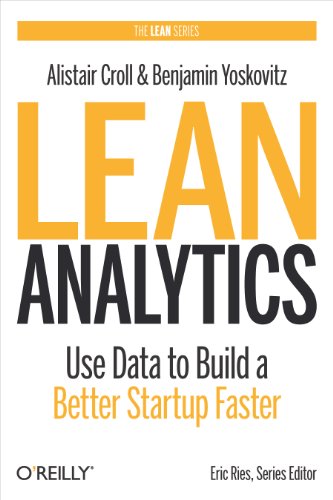
Lean Analytics - Use Data to Build a Better Startup Faster by Alistar Croll & Benjamin Yoskovitz (Book Review)
Content :
The long search for ideas to help entrepreneurs start their own business should precisely look upon the Lean Startup path and pick Lean Analytics: Use Data to Build a Better Startup Faster by AlistarCroll& Benjamin Yoskovitz. The trend of having a lean startup is on full blaze and one should try following the methodology of the book to know exactly what it means and how the same is implemented. It could also be used as a help book along the process.
Everyone has their own views on the tech startup market but very few actually put in efforts in the research in quantitative or qualitative terms so as to substantiate their claims.
In Lean Analytics, the writers have done an amazing job in the introductory part, showing as to how the writers have applied their own methods in the startup business, and there is ample guidance provided on how to start implementing lean analytics in one’s business.
It can be seen that there is a great blend of various concepts, case studies and interviews with successful founders throughout the book.
There are the number of concepts presented by the writers, but the following concepts stand out in the book:-
Reality of a Startup - The writers went on to mention what it really takes to start a company exposing the myth of startups perceived as being a get rich quick scheme. They have challenged further as why one would start a business in the first place and questions the pre-existing businesses about what they think it takes to succeed. They further pointed out that business isn’t for everyone, nor should it be and havebusted the glamour of internet lies which extrapolate similar ideas.
One Metric That Matters - It is emphasized that the discipline on picking the most important metric that matters to the business and it should be focused on relentlessly. It is also further stated that this metric will depend upon the stage of the business, and also that the most important part of the success in the business championing that one metric.
Identifying the Business - The writers said that what one should measure should depend upon the kind of business, they are in. They helped us out by differentiating between the six kinds of businesses and the metrics to be measured for each one of them. The six types of businesses identified are as follows :- E-commerce, Software as a service (SaaS), Free Mobile App, Media Site, User-Generated Content, and Two- Sided Marketplace. In short, they have covered all the common points virtually which are related to the internet business. The business of a person should fit into one of these buckets, or any of the combination of these.
Lines in the Sand - It is one of the most helpful pieces of the book which is pointing out the benchmark price for the most popular metrics for each type of the business. For example, there are benchmarks for a SaaS business for sign-up rates, conversion rates, and churn that will let the reader know how close one is to the industry standards so one can gauge whether one is right, under optimizing, or over optimizing for a particular metric.
Obviously, one would like the book and highly recommend it further for anyone who is contemplating starting a business, has just started a business, or is struggling to find a direction in their business, even if it is no longer considered a traditional startup. This book will also get one to think about how one is running their business and sparked a few new ideas to pursue.
If one is working in or around the technology industry, it’s a book one needs to have around given the number of recommendations and business insights it contains. It could make the difference between success and failure, which can be an extremely fine line in the world of business these days

